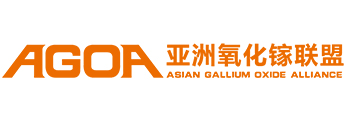

【Device Papers】Investigation of Diamond/Ga₂O₃ and Diamond/GaN Hetero-p-n Junctions Using Mechanical Grafting
日期:2025-08-18阅读:267
Researchers from The University of Utah have published a dissertation titled "Investigation of Diamond/Ga2O3 and Diamond/GaN Hetero-p-n Junctions Using Mechanical Grafting" in Semiconductor Science and Technology.
Abstract
Exploring hetero-p-n junctions between ultrawide bandgap (UWBG) semiconductors is critical for advancing our understanding of carrier transport and interface properties, which are key to enabling future high-power electronic applications. However, large lattice mismatches and difficulty in doping have made such investigations particularly difficult. In this study, we introduce a unified approach for forming diamond/β-Ga2O3 and diamond/GaN hetero-p-n junctions by mechanically grafting (MG) their bulk materials, without the use of interfacial layers or complex bonding processes. The mechanically grafted diamond/β-Ga2O3 junction demonstrates a turn-on voltage of ~3.25 V and maintains stable electrical behavior up to 125 °C, with low hysteresis (≤ 0.2 V at room temperature and ≤ 0.7 V at elevated temperature). A remarkably low ideality factor of 1.28 and rectification ratios exceeding 106 underscore the quality of the junction. The diamond/GaN heterojunction, formed on both Ga-polar and N-polar surfaces, exhibits stable diode behavior with light emission, indicating efficient charge transport. Both configurations demonstrate near-ideal characteristics, with ideality factors of 1.30 (Ga-polar) and 1.06 (N-polar), and rectification ratios exceeding 106 and 104, respectively. The Ga-polar junction also shows notably low hysteresis (< 0.05 V at 10 μA), outperforming its N-polar counterpart. These findings highlight mechanical grafting as a practical and reproducible approach for studying heterojunctions between lattice-mismatched UWBG semiconductors. This method enables direct investigation of interface behavior and junction performance, offering value for both research and education in ultrawide bandgap semiconductor technologies.
DOI:
https://doi.org/10.1088/1361-6641/adf254


